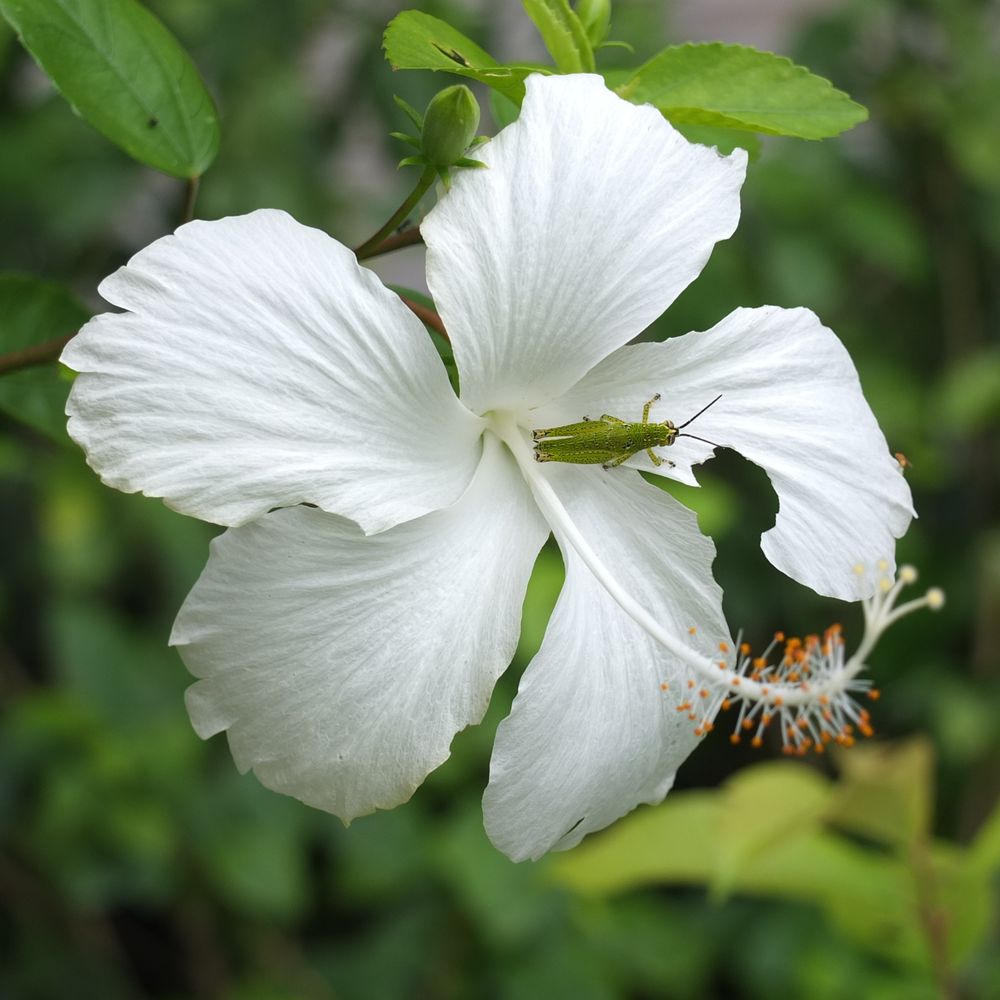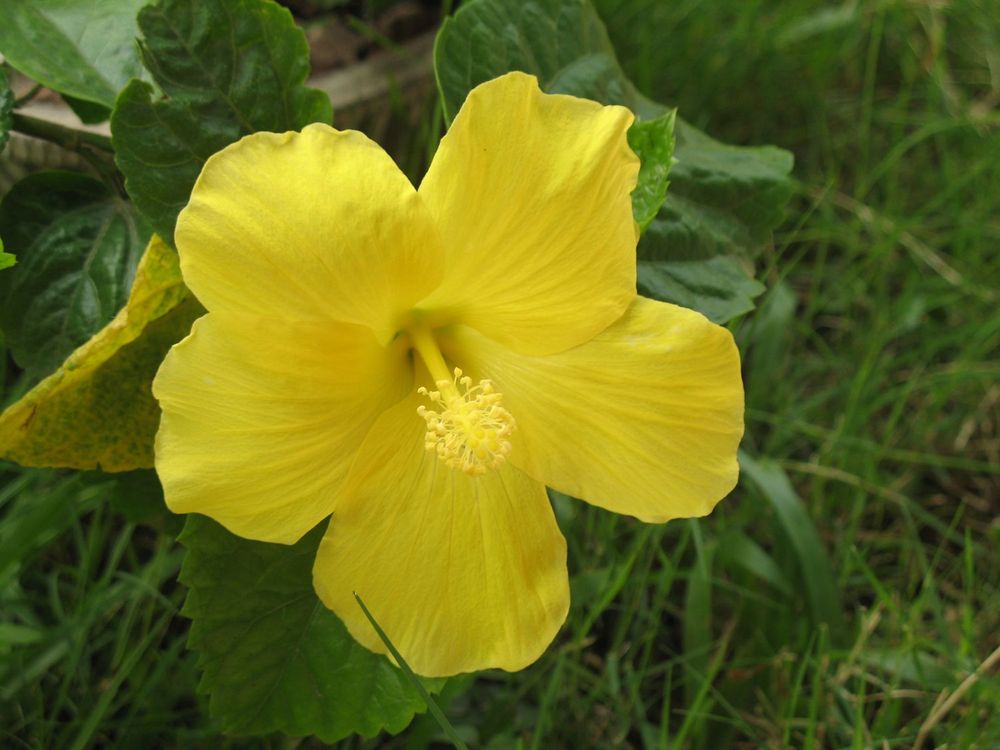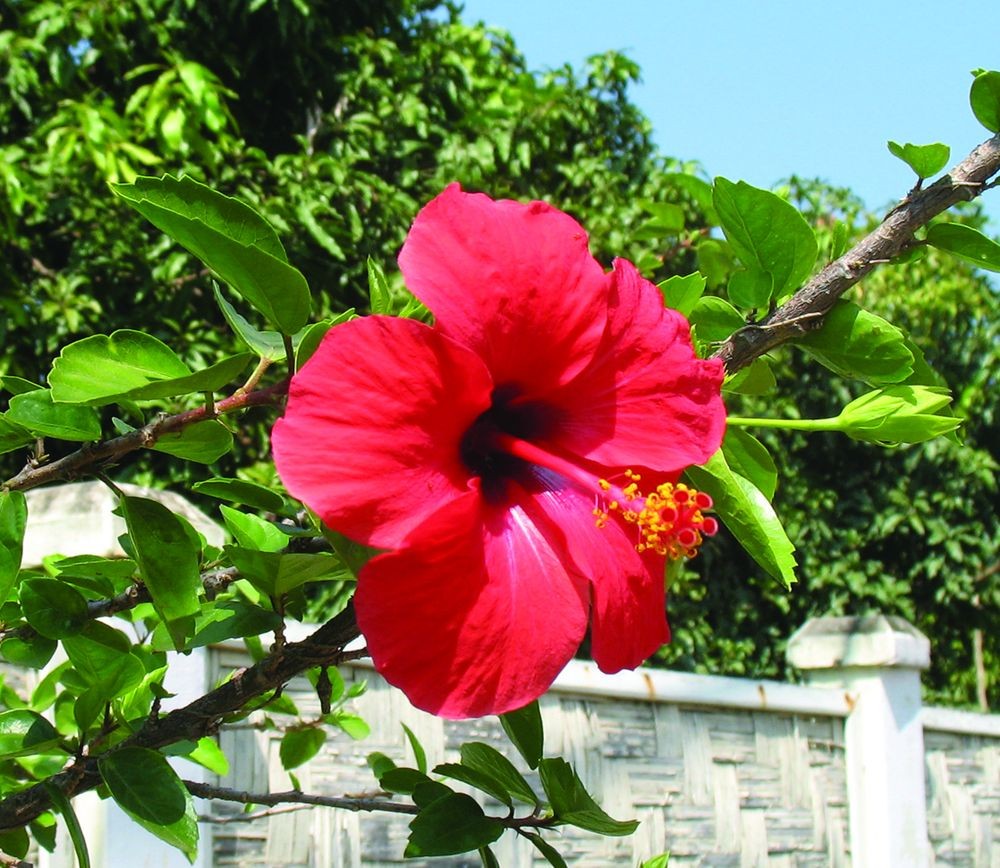Apart from its traditional use as a food colouring, the hibiscus flower has no other use than ornamental and cultural. The range of colours that this very decorative flower can take, single or double, is extensive, but the red varieties also have a strong symbolic function. For Doré, who opposes it to the white flower of the Frangipani tree, “the red Hibiscus is the flower of the genies“; in the cults given to the Phi, the offering cups contain red flowers, generally the ones that the Lao call dok Dèng (“red flower”). Legend has it that when the city of Luang Prabang was founded, a young girl threw herself into the foundation hole, adorned with red hibiscus flowers. The red colour which would be reserved for the geniuses would be thus opposed to the white colour, that of the Buddha.
In India, the red Hibiscus flowers are reserved for the terrible goddess Kali who commands death. In Thailand, the red Hibiscus (chaba) has not always had a beautiful role. In fact, this flower was once pricked into the hair of the adulteress and hung from the ear of the condemned to death.
En dehors d’une utilisation traditionnelle comme colorant alimentaire, la fleur d’hibiscus n’a pas d’autres usages qu’ornemental et culturel. La palette des couleurs que peut prendre cette fleur très décorative, simple ou double, est étendue, mais les variétés rouges ont, en outre, une fonction symbolique forte. Pour Doré, qui l’oppose à la fleur blanche du Frangipanier, « l’Hibiscus rouge est la fleur des génies »; dans les cultes rendus aux phi, les coupes à offrande contiennent des fleurs rouges, celles généralement nommées par les Laos dok Dèng (« fleur rouge »), comme Archaimbault et M.P.Lévy le remarquent à plusieurs reprises. La légende raconte que lors de la fondation de la ville de Louang Prabang, une jeune fille se jeta dans le trou de fondation, parée de fleurs d’hibiscus rouges. La couleur rouge, qui serait réservée aux génies, s’opposerait ainsi à la couleur blanche, celle du Bouddha.
En Inde, les fleurs de l’Hibiscus rouge sont réservées à la terrible déesse Kali qui commande à la mort. En Thaïlande, l’Hibiscus rouge (chaba) n’a pas eu toujours le beau rôle. En effet, cette fleur était autrefois piquée dans la chevelure de la femme adultère et accrochée à l’oreille du condamné à mort.



Apart from its traditional use as a food colouring, the hibiscus flower has no other use than ornamental and cultural. The range of colours that this very decorative flower can take, single or double, is extensive, but the red varieties also have a strong symbolic function. For Doré, who opposes it to the white flower of the Frangipani tree, “the red Hibiscus is the flower of the genies“; in the cults given to the Phi, the offering cups contain red flowers, generally the ones that the Lao call dok Dèng (“red flower”). Legend has it that when the city of Luang Prabang was founded, a young girl threw herself into the foundation hole, adorned with red hibiscus flowers. The red colour which would be reserved for the geniuses would be thus opposed to the white colour, that of the Buddha.
In India, the red Hibiscus flowers are reserved for the terrible goddess Kali who commands death. In Thailand, the red Hibiscus (chaba) has not always had a beautiful role. In fact, this flower was once pricked into the hair of the adulteress and hung from the ear of the condemned to death.
En dehors d’une utilisation traditionnelle comme colorant alimentaire, la fleur d’hibiscus n’a pas d’autres usages qu’ornemental et culturel. La palette des couleurs que peut prendre cette fleur très décorative, simple ou double, est étendue, mais les variétés rouges ont, en outre, une fonction symbolique forte. Pour Doré, qui l’oppose à la fleur blanche du Frangipanier, « l’Hibiscus rouge est la fleur des génies »; dans les cultes rendus aux phi, les coupes à offrande contiennent des fleurs rouges, celles généralement nommées par les Laos dok Dèng (« fleur rouge »), comme Archaimbault et M.P.Lévy le remarquent à plusieurs reprises. La légende raconte que lors de la fondation de la ville de Louang Prabang, une jeune fille se jeta dans le trou de fondation, parée de fleurs d’hibiscus rouges. La couleur rouge, qui serait réservée aux génies, s’opposerait ainsi à la couleur blanche, celle du Bouddha.
En Inde, les fleurs de l’Hibiscus rouge sont réservées à la terrible déesse Kali qui commande à la mort. En Thaïlande, l’Hibiscus rouge (chaba) n’a pas eu toujours le beau rôle. En effet, cette fleur était autrefois piquée dans la chevelure de la femme adultère et accrochée à l’oreille du condamné à mort.






Apart from its traditional use as a food colouring, the hibiscus flower has no other use than ornamental and cultural. The range of colours that this very decorative flower can take, single or double, is extensive, but the red varieties also have a strong symbolic function. For Doré, who opposes it to the white flower of the Frangipani tree, “the red Hibiscus is the flower of the genies“; in the cults given to the Phi, the offering cups contain red flowers, generally the ones that the Lao call dok Dèng (“red flower”). Legend has it that when the city of Luang Prabang was founded, a young girl threw herself into the foundation hole, adorned with red hibiscus flowers. The red colour which would be reserved for the geniuses would be thus opposed to the white colour, that of the Buddha.
In India, the red Hibiscus flowers are reserved for the terrible goddess Kali who commands death. In Thailand, the red Hibiscus (chaba) has not always had a beautiful role. In fact, this flower was once pricked into the hair of the adulteress and hung from the ear of the condemned to death.
En dehors d’une utilisation traditionnelle comme colorant alimentaire, la fleur d’hibiscus n’a pas d’autres usages qu’ornemental et culturel. La palette des couleurs que peut prendre cette fleur très décorative, simple ou double, est étendue, mais les variétés rouges ont, en outre, une fonction symbolique forte. Pour Doré, qui l’oppose à la fleur blanche du Frangipanier, « l’Hibiscus rouge est la fleur des génies »; dans les cultes rendus aux phi, les coupes à offrande contiennent des fleurs rouges, celles généralement nommées par les Laos dok Dèng (« fleur rouge »), comme Archaimbault et M.P.Lévy le remarquent à plusieurs reprises. La légende raconte que lors de la fondation de la ville de Louang Prabang, une jeune fille se jeta dans le trou de fondation, parée de fleurs d’hibiscus rouges. La couleur rouge, qui serait réservée aux génies, s’opposerait ainsi à la couleur blanche, celle du Bouddha.
En Inde, les fleurs de l’Hibiscus rouge sont réservées à la terrible déesse Kali qui commande à la mort. En Thaïlande, l’Hibiscus rouge (chaba) n’a pas eu toujours le beau rôle. En effet, cette fleur était autrefois piquée dans la chevelure de la femme adultère et accrochée à l’oreille du condamné à mort.


